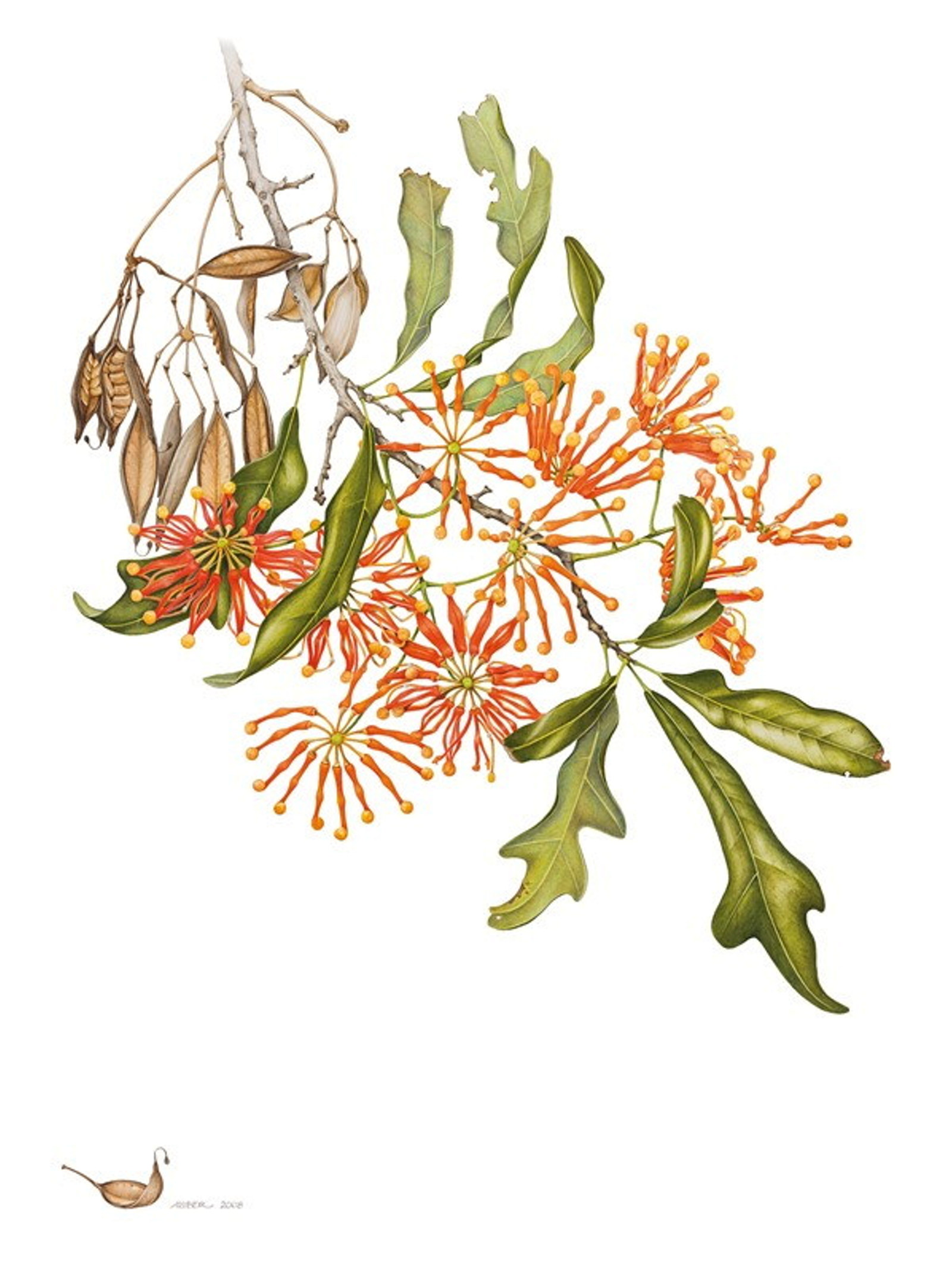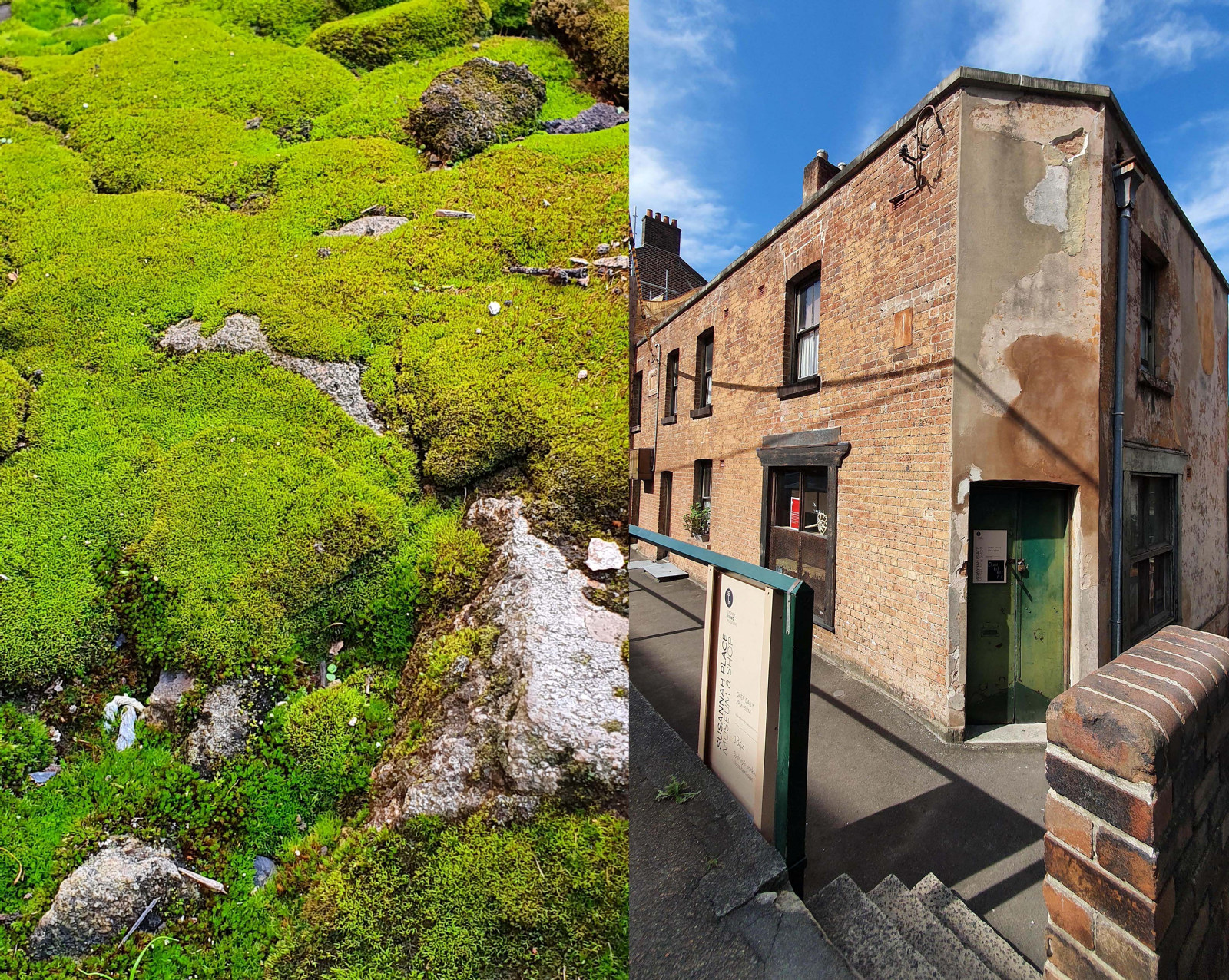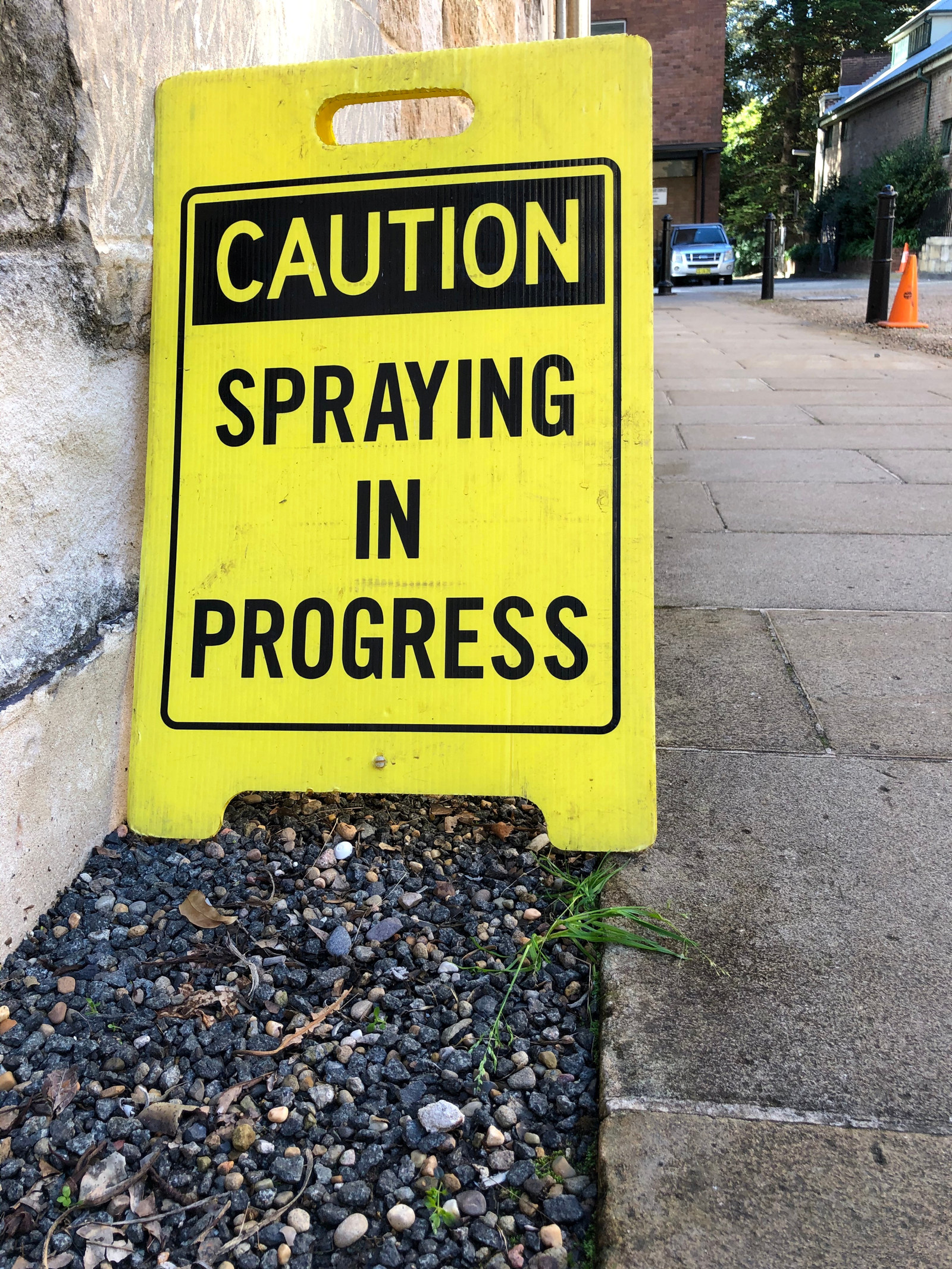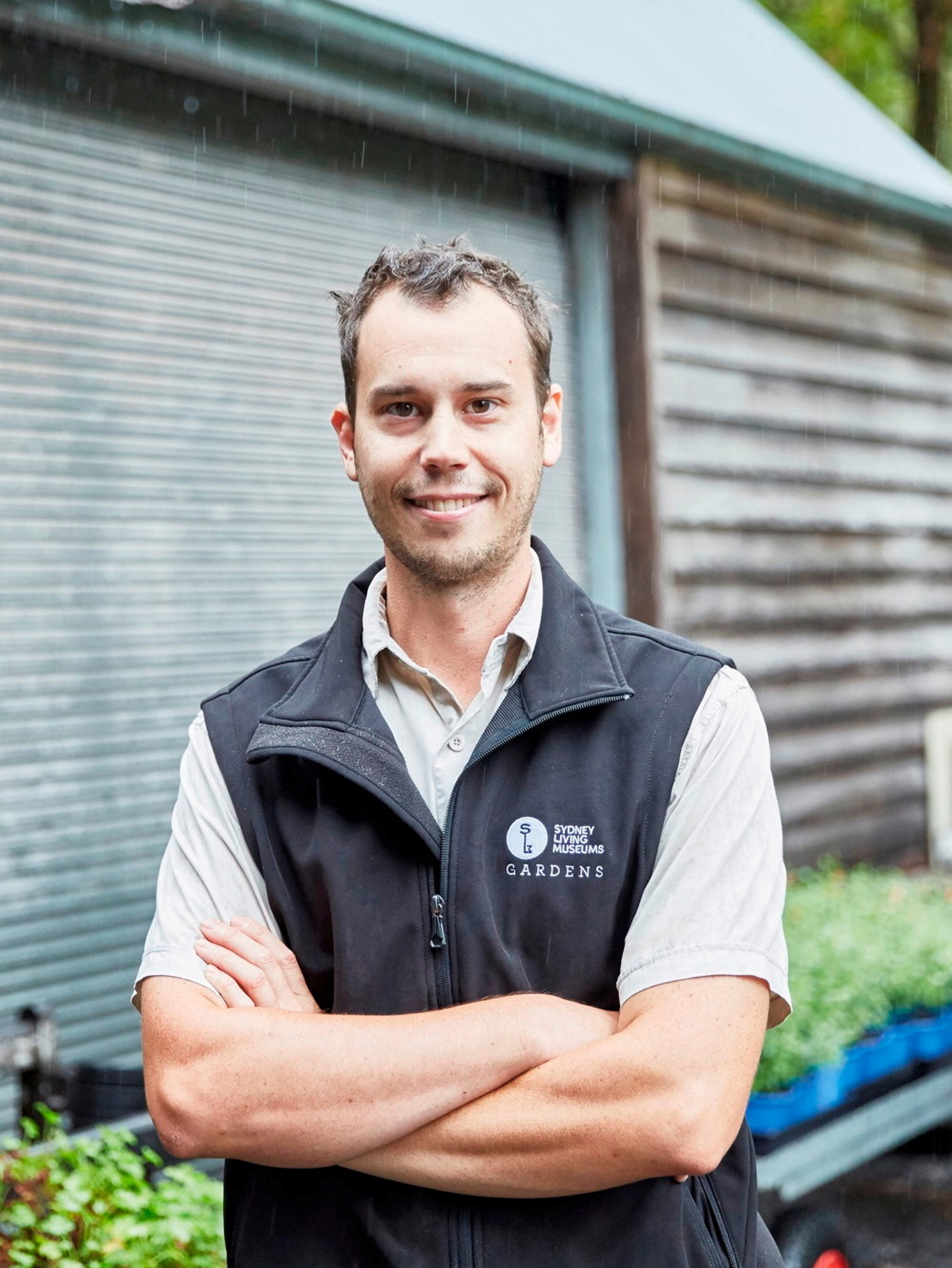Nightmare with our elm tree
It was early in the morning and the rain was falling when Horticulturist Stephen Goldsworthy turned up at Elizabeth Farm for the day’s work.
During his routine inspection of the property he noticed that the propped Chinese Elm Tree (Ulmus parvifolia) looked lower to the ground than usual, and that it was touching the ground where usually you could easily walk underneath the canopy. Given the dark and damp conditions Steve decided that he would wait until better light to fully assess the situation; he also thought to himself that the Elm was in full seed and has a tendency to hold water and arch towards the ground so maybe it would spring back.
With the tree having such a significant lean on it, timber props were installed in the 1980s to help support the long low-hanging branches. The props were experimental at the time and since then there have been a couple of modifications over the years to reduce the abrasion on the tree’s limbs. We think it may have been the first instance in Australia where an old tree had been propped this way, based on widely used English practices.
Soon after the light improved and the rain subsided (for the time being), Steve took a closer look and discovered that not only was the branch heavy from being laden with water, but also that this weight, combined with movement from the overnight wind, had caused a spiral fracture in the limb to split and open, resting the branch on the ground. This had occurred past the existing support props; over the day the split continued to grow and with it so did our worries. This meant the branch was still moving and we would therefore need to create an exclusion zone around the tree to prevent anyone from entering the potentially dangerous fall zone.
The next day, the Elizabeth Farm curator, Scott Hill and I met with Kane, a qualified arborist, to assess the damage and decide on what course of action we should follow to maintain the tree’s current health. We discovered that this elm has had a history of spiral fractures and Kane even pointed out a couple of previous fractures that had healed over and continued to grow, showing the tree’s ability to repair its self. Further investigations showed no signs of the tree uprooting (which was of major concern) or any other damage. The fact that the tree had slowly twisted to the ground and held itself there, had stopped the limb from any further twisting and potentially shifting the weight of the tree entirely off balance. With additional wind and rain forecast, Kane recommended that we support the failed limb in place to prevent further movement, which we achieved that day with the help of two steel props and careful bracing.
The branch is still safely resting there today as we work with a specialist tree safety company who are designing and engineering us some new support props which, along with some selective pruning and end weight reduction, should prolong the tree’s life for many more years to come.
We will share with you the next installments as they happen.
Published on
Plant your history
Browse all
Florilegium plants
A gathering of flowers: the Florilegium collection
Finely detailed botanical artworks reveal the range of plants introduced to Sydney’s gardens over the past 200 years

Plant your history
A mossy analogy for Susannah Place: small but mighty
Mosses are everywhere! They are small, mighty, unsung and inhabit the most unusual places. They can be found in all our museum outdoor spaces if one looks closely enough

Plant your history
A new weapon in the war on weeds
A black and yellow sign warns me there is “Spraying in Progress”, and I wonder for a moment why no one is wearing a mask, or even gloves. But the dangerous looking mist enveloping these men is not what it seems

Plant your history
Acanthus - an apt symbol for The Mint
Look at any classical building today, anywhere in the world and chances are you will find an acanthus leaf lurking somewhere
